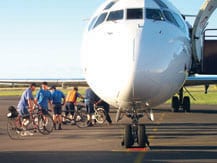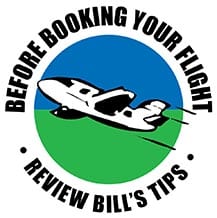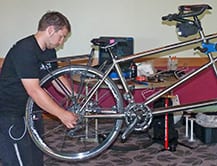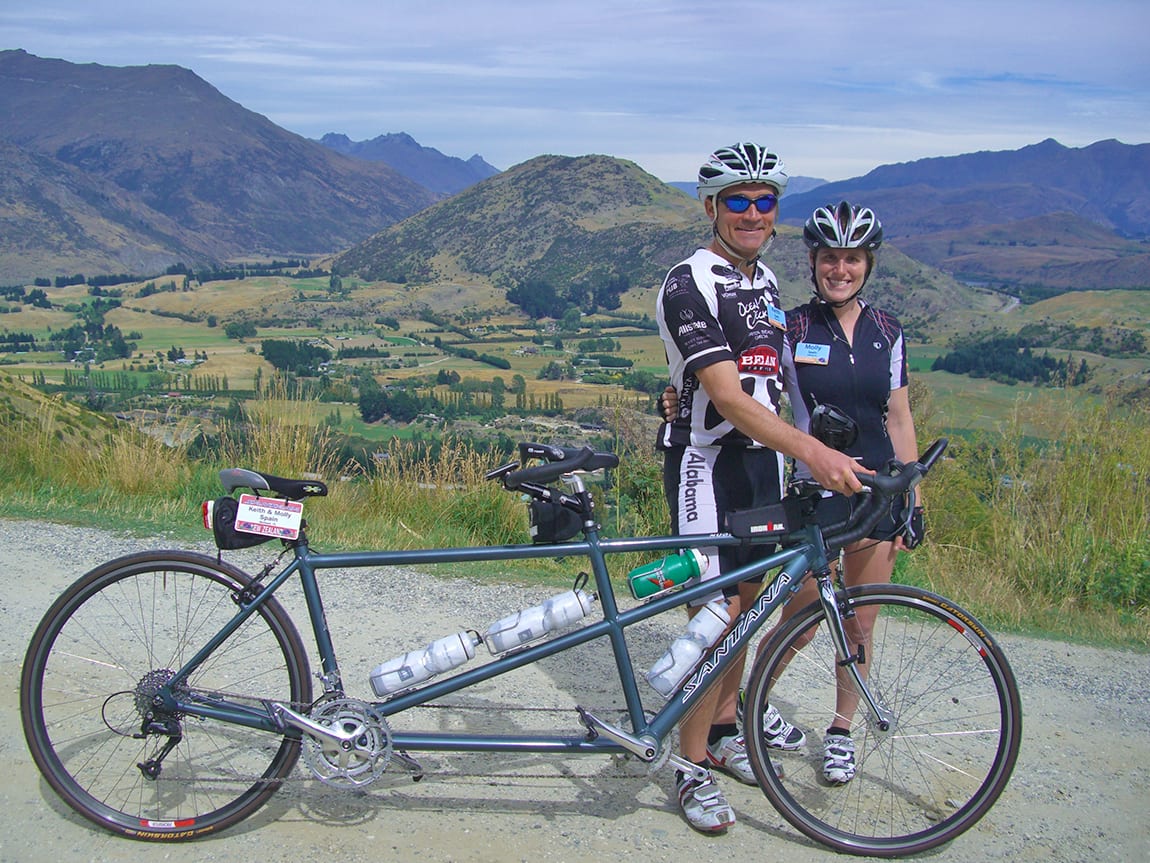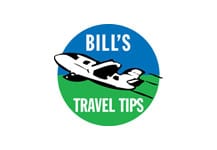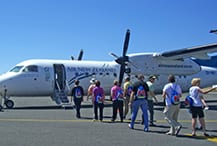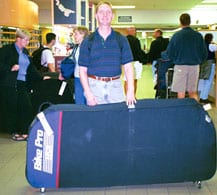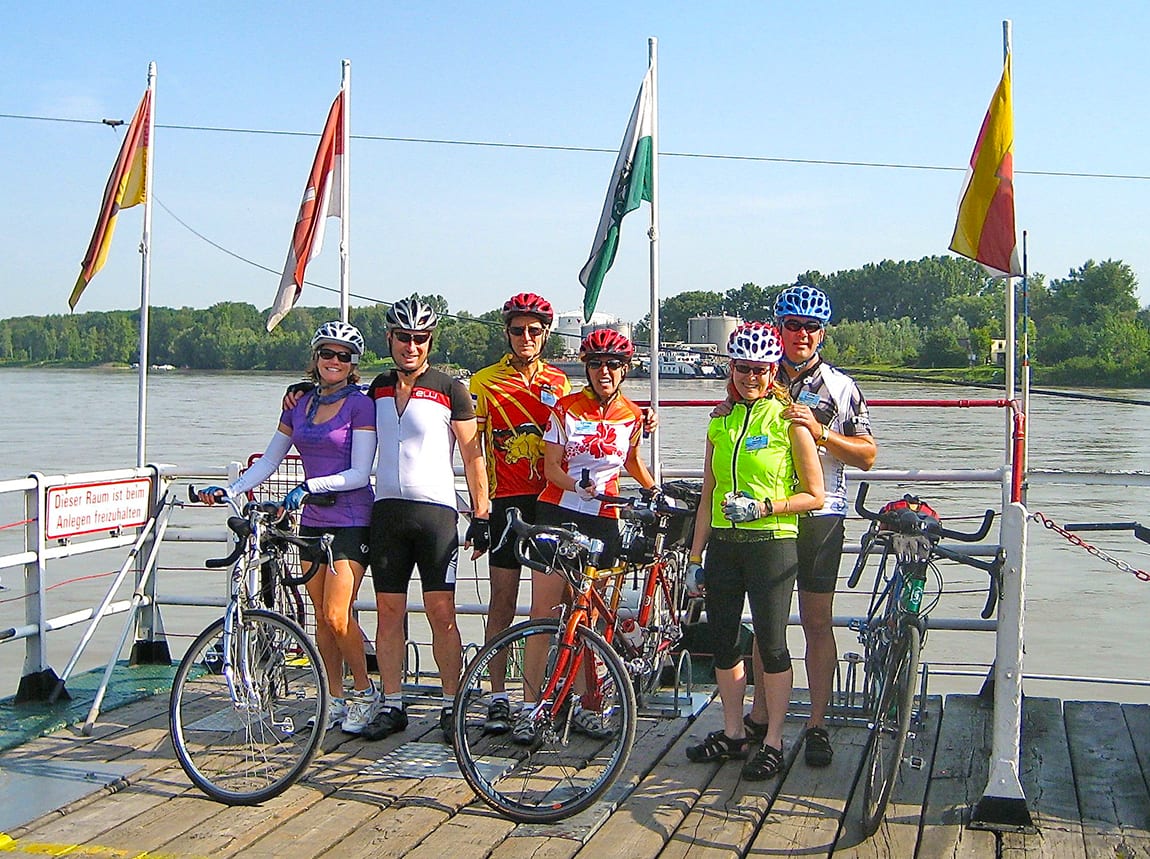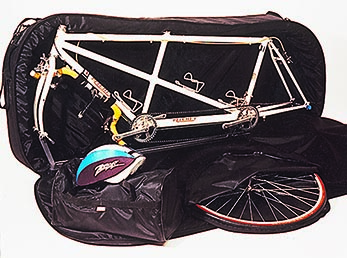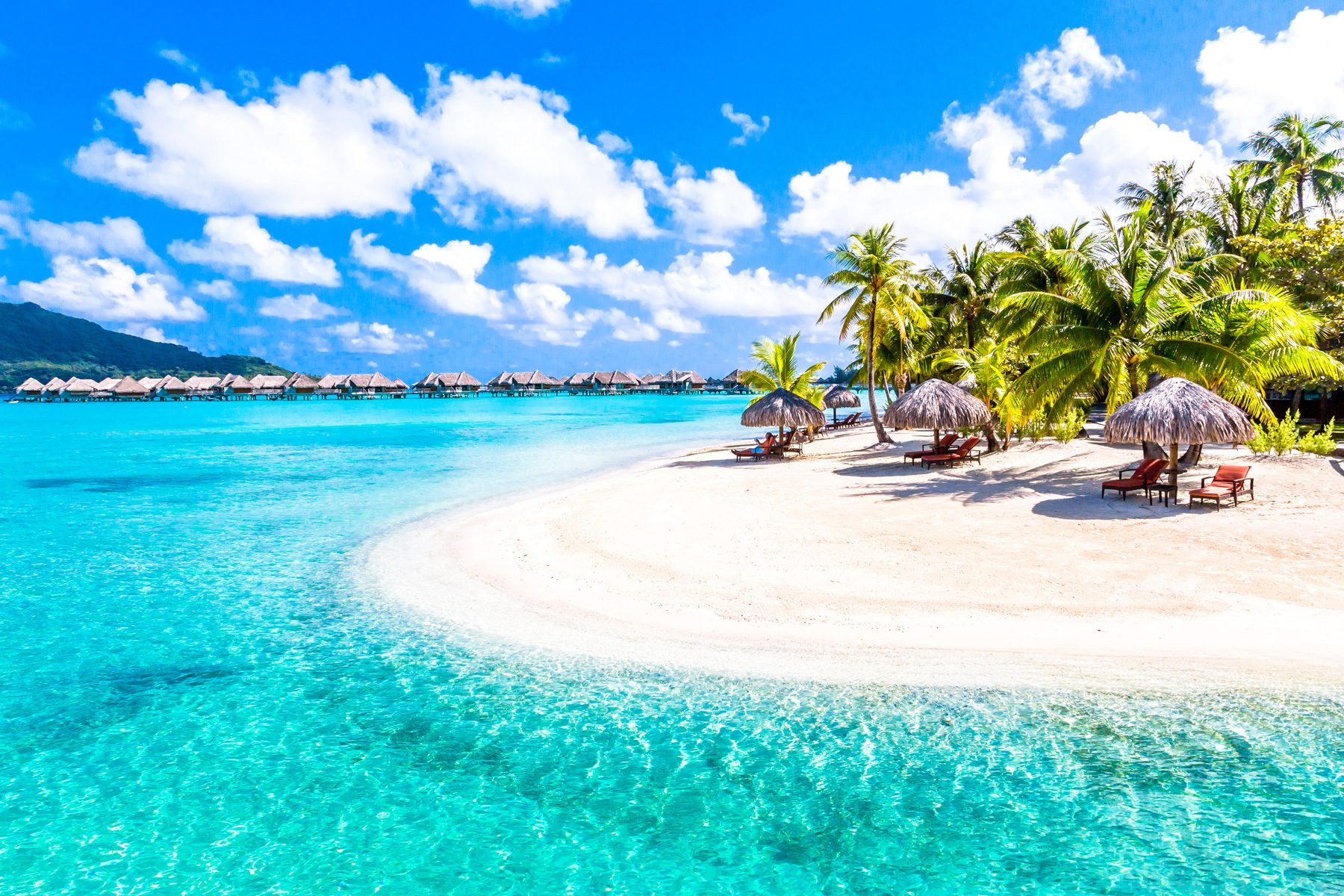26. Employ a willing ally
When curbside help is available, Jan and I always flash some cash while trying to check our bags and tandem(s) with a sky-cap or porter. On the way back from a tour in Hawaii a $60 tip caused a porter to shepherd four boxed tandems plus four overweight suitcases through the TSA and agricultural-inspection lines before asking me to give him my credit card so he could “let me relax” while he checked my stuff at a remote counter. When he returned to have me sign the slip, my total fee for 4 tandems and 4 oversize suitcases was $80. While most porters won’t be this accommodating, even when they only go so far as to escort you inside, I’ve learned that airline counter agents (who don’t take tips but do assess fees) will almost always provide better treatment to passengers who have employed porters. Does this make sense? Sure. Airline check-in agents rely on the overworked and poorly-paid porters to help them process crowds and get planes dispatched on time. Abusing a porter’s clients, and depriving these helpers of their source of tips, would be unthinkable.
So whenever you can find one, use a porter to help you with check in. While the agents at the counter cannot accept tips, a sky-cap who spots your cash will instantly understand your desire for “superior customer service.”
27. Southwest Loves Tandems
While most of the large airlines tend to move with the herd, Southwest takes pride in being contrarian. When others adopted fees for formerly free suitcases, Southwest attracted new business with their “suitcases fly free” ad campaign. Similarly, as other airlines made it tougher to fly with sporting equipment, Southwest dropped their bicycle fee to $75 (and allows a weight of up to 100 pounds). Before anyone phones me to report that Southwest’s web site claims they will turn away sporting items exceeding 80-inches, please note that the same section of their website specifically allows vaulting poles, which are always much longer. Again, unless provoked, Southwest’s check-in agents won’t look for ways to prevent courteous couples from checking tandems onto one of their roomy 737s.
28. Will Delta turn away tandem owners?
A few years ago Delta’s list of luggage fees was changed to specify “single seat” bicycles. This terminology, still present, has caused scores of tandem owners to contact Santana for advice. A few months later, United posted a ban against “tandem bicycles.” Although United quickly reversed course (and now specifically invites tandems!) this short-lived ban caused Santana to field additional calls. My advice to all tandem owners is to ignore all senseless regulations found on any airline’s website. Punishing Delta or themselves because of a ridiculous regulation, or imagining that any airline will turn away a courteous couple because of their tandem, is silly.
29. “This whole baggage fee issue seems so confusing”
Here’s the simple version for U.S. check-in: Airline agents will always need to count bags in order to create the same number of bar-coded tags. Because their count is easy to audit, check-in agents will usually charge you for every item you check. In the U.S. most agents are not required to log the weight of your bags. Still, as your bag crosses the scale, they are now supposed to tag everything over 50 pounds to prevent workers’ comp claims. Even when they add the extra tag, agents sometimes do this without comment or charge. Unless the item is a lot bigger than a normal suitcase, size is ignored. If an item is as large as a normal bike case, they’ll page a baggage handler (which justifies their fee for accepting your bike).
In Europe it’s different; and often worse. On flights within Europe many airlines are now charging by the kilo for all luggage including carry-on. After providing a small number of kilos for free, they weigh everything you’re not wearing (even purses and computers). The excess weight fee of up to 20 Euros per kilo (which is over $10 per pound) is so high that in European airports you’ll see people bundled in layers of clothing, with extra shoes hanging out of their pockets. Under these rules a tandem packed in two S&S hard cases will be at least $100 more expensive than the same tandem packed in a SafeCase. Will this practice spread to the U.S.? Impossible to predict.
30. Always check fees for Sporting Equipment—European Example
When an agent quotes a high price to check your hidden tandem, why not ask “Would it be less if I was checking a bicycle?” My example is a Swiss flight Jan and I took between Spain and Zurich. After checking a minimal allotment of free luggage plus a tandem packed in pair of S&S cases (with a gross weight of 88 lbs), the normal luggage fee for our “hidden” bike added about 600 euro (about $800). When told it was a tandem the check-in agent lowered the fee for both cases to 70 Euros (about $100). Swiss, by the way, not only has great rates for bikes, their definition of a bike specifically includes tandems.
31. Why do airlines write regulations against bicycles or tandems?
Almost all of the past, current and future anti-bike fees and rules were written by airlines as a reaction to a small number of bike riders who have caused problems. The posted accounts written by cyclists who were “turned away” or “had to put up a fight” may not tell the whole story. Why is it, do you suppose, that these same posts can reveal an arrogant and/or belligerent attitude? If they posted the whole story we’d find that most scare stories are written by those who showed up too late, ticketed themselves onto a plane that was too small, or disrupted check-in with a loud and/or prolonged argument about fees.
32. If you followed these tip and still have trouble…
Stay calm and polite, but don’t walk away. Instead of demanding to see a supervisor, ask nicely if there’s anyone who can help you. Remind them it’s a special vacation. Look sad!
If you follow all these tips and miss a flight (which won’t happen), or if you discover a new strategy for easy tandem check-in, my e-mail is bill@santanatandem.com
33. Has flying with a tandem become too difficult or expensive?
It only seems difficult because airlines are struggling to survive in an era of internet fare wars where their frequent choice is to sell seats below-cost, or have planes fly empty. If airlines can’t cover costs with airfare, they’ll charge extra for everything else. While checking luggage has therefore become pricey, the total cost for flying with a bicycle is cheaper today than it was a decade ago. Because tandems almost always fly for the price of a single bike, vacationing with your tandem is the best bargain of all.
34. The best way to prevent problems and save money
Airline luggage rules have recently changed in unpredictable ways. Fees will continue to change as airlines learn how to increase revenue while selling seats in an internet-driven environment. Because the “bean counters” at corporate headquarters have made check-in confusing and restrictive, employees at check-in counters have increasingly reacted by siding with passengers instead of researching and applying the onerous “regulations” that make their jobs less pleasant. Additionally, many of these overworked agents may resent collecting new fees for the same management that recently cut their pay or benefits. As a result, the price tandem owners pay to check their bike (which was always unpredictable) has become less and less a function of rules, weights and case sizes—and is increasingly a reflection of your personal demeanor. Does this make sense? Sure. Airport check-in agents have a thankless job, and are often mistreated. While they can’t lash back at those who abuse them, they can receive a sense of job satisfaction by rewarding passengers who are exceptionally nice. At airport check in Jan and I are charming, smiling and friendly. We also work very hard to make sure we arrive early, and in a good mood. If you show up at the airport late, unprepared, frowning, or with a chip on your shoulder, you may pay more to check your luggage; and you might be prevented from checking your tandem!
– Bill McCready, Founder and President Santana Cycles, Inc.
Bill@SantanaTandem.com
PS: While I wrote this for clients bringing tandems to Santana’s tours (all brands welcome), I’m happy to share Bill’s Tips with all tandem riders. If you want to pass the word, please don’t copy, re-write or otherwise “borrow” my carefully researched and totally original material. Instead, it’s perfectly OK to download and send this .pdf file. Better yet, if you refer people to Santana’s website (SantanaAdventures.com) they’ll always be able to find the newest version of Bill’s Tips within the Events section.
Attention all webmasters: You are hereby cordially invited to share a link to Santana’s website, where your readers can view or download this .pdf file.

